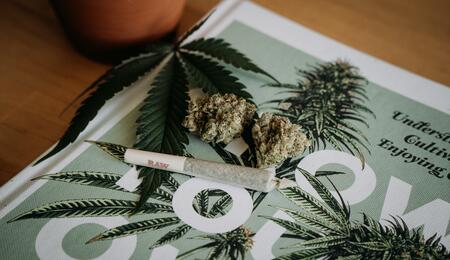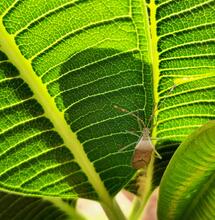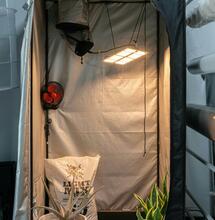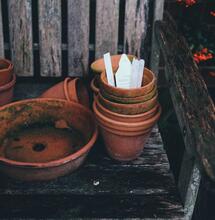Differences in LED Lighting

The LED technology has spread among a number of both amateur and professional growers in recent years. That has caused lots of new producers to turn up. Unfortunately, differences in the quality of individual LED modules are huge. I am going to give you a few tips and advices that should help you choose reliable and effective LED lighting for your plants.
The light diodes have entered all branches of the lighting industry; you can see them in streets, shopping malls, offices, houses and cars. This type of lighting has many benefits when compared to ordinary lamps. Here are some advantages that are of great importance: lower power consumption, lower heat emission, longer service life and wide possible applications in the light spectrum. These reasons made the LED modules a commonly used technology for growing. The biggest issue for many growers is the fact they are still pretty costly compared to classical sodium and halogenide discharge lamps.
Together with an increasing demand for LED, the supply is also growing incredibly fast. However, the competition is often focused on low prices instead of quality. I have personally tried a couple of LED modules and I have found out that there are huge differences between them, so I decided to ask a lighting expert Pascal Evers what makes the modules different. After our conversation, I realized that the issues concerning the LED would need to be dealt with in a whole book. Nevertheless, I will try to squeeze the most important things into a couple of paragraphs and share the essentials with you.
LED Cooling
Even though LED modules produce less heat that sodium or halide lamps, it is necessary to cool them, because every electronic device produces some heat. The performance decreases with increasing temperature, which also lowers the amount of emitted light. The optimal temperature would be about 25 °C around LED diodes. The higher the temperature, the lower actual performance of the light source becomes – along with shorter service life. 50 °C marks the temperature with a significant loss of power. When you do not cool the diodes sufficiently, the temperatures can get up to 80 °C, which reduces the power by tens of percents and distinctively shortens the lifespan of your LED (with lifespan being one of the biggest advantages of this technology). The LED modules for growing are cooled either actively or passively. Ventilators, similar to computer cooling, are the most widespread type of active cooling. This method of cooling is easier to construct and does not weigh too much, so it is suitable for a whole range of lighting systems.
Effectivity and reliability of this cooling depends on two things: what ventilator does the grower choose, and whether they also add a passive cooler to it. More expensive ventilators are quieter, have longer lifespan and better dust and humidity resistance, which is very desirable in the grow room environment. A lot of cheap amateur-made LED modules must be cooled with ventilators, because the design and production of other types of cooling would be challenging not only in terms of knowledge, but in terms of technical equipment. Imagine you decide to manufacture LED lighting for growing without having experience with the production of similar devices. If you know the specter your light source should have, it should not be too hard to get hold of diodes with required light properties. Most likely, you do want to make money off this LED lighting, so you are going to look for diodes, power supplies, control units, coolers and chassis that are not very expensive.
As soon as you start searching, you realize that there are lots of those goods on the internet and that it is quite easy to receive anything basically in no time. As you do not have any experience with the production of lighting sources, you are not going to puzzle over the question whether those components create a composition that is going to be cooled enough, distribute the light equally and have long lifespan. What you are going to care about is that the components fit dimensionally. You are going to find descriptions of products saying that they are the best on the market and promising you a five-year warranty. However, the company you are going to buy those products from will be probably renamed three times before those five years pass and there would not be a place to lodge a claim. Sadly, many producers of LED components act just like that. It is enough to have a screwdriver, soldering iron and internet connection and you can be the best LED producer out there – or at least feel like one.
However, with this approach and equipment, you are not probably going to produce reliable cooling systems and be able to properly measure the temperature of chips when the lights are on in different environments and for different amounts of time. Not to mention the designing of passive or water cooling, or expensive measurement of the spectral curve depending on the distance of the plants from the source. Your ventilator cooling system might just as well turn out to be a dust vacuum cleaner that can cool the diodes enough to make them work, but at the same time covers the chips with dust until they get broken. What tells you something about the quality of particular LED lighting is the value of IP rating, which should be at least IP54. The higher the better. If the manufacturer does not know the IP rating of their product, you’d better look somewhere else. LED modules can be very reliably cooled by water. There are various growing devices available that can be connected to a water-cooler and do a great job preventing overheating of the device.
However, the water-cooler needs some additional electricity to operate, which reduces the savings of LED technology. The aforementioned ventilators obviously also consume some electricity, but the water-coolers are more demanding. The disadvantage of any active cooling is the risk of a breakdown, which may lead to the overheating of LED module – and it can eventually stop working. The more “breakable” parts your device consists of, the bigger the chance some part eventually gets broken. Thus, the optimal way of LED cooling is a passive cooling system. It does not consume any additional electricity, nor produce noise – and when installed properly, it keeps the electronics safe, even the diodes inside of the lighting source. The main disadvantage is that these systems are pretty heavy. You need to use quite a lot of fine material, so the final price is higher. They are expensive also because you have to carry out lots of tests and calculations in order to be able to make a functional passive cooling.
Various LED Installations
There are two different ways of diode installation used for growing – a COB and a single-chip. The COB (Chip On Board) technology has more diodes placed on one chip, while the single-chip technology needs a separate chip for each diode. You are able to put more diodes on the same space when using the COB and therefore acquire more light intensity. This technology is successfully used for both home and industrial lighting of residential, public and working spaces. In these installations, the diodes with identical light spectrum and voltage are installed on the chip. If you want to put diodes that emit light with different wavelengths on one chip, you may hit a snag. Diodes with different colors can require different voltage. However, you can only send one voltage to a chip with more diodes. In that case you have a couple of options. 1) You adjust the voltage to diodes that need the lowest voltage. 2) You adjust the voltage to the diodes with the highest voltage. 3) You choose a voltage somewhere between the lowest and the highest needed voltage. In the first case, you do not exploit the whole potential of all the diodes that are on the chip, but you are not overloading any diodes. In the second and the third case, you just overload some of the diodes causing them to wear out faster (and you are also increasing the risk of damage).
As soon as one diode on the chip gets damaged, it keeps functioning as resistor and keeps getting warmer. You already know the effects of heat on diodes. Many producers that use the COB technology overload the diodes in order to show the biggest light power. It looks great on the first sight, and when measured, the results are impressive, but you can imagine how long such thing can work. The COB technology is cheaper than the single-chip and makes it possible to squeeze more diodes on the same space. These are the two main properties that appeal to manufactures. But the technology of a separate chip for a separate diode has lots of advantages, too. For example, it allows the colored diodes to be spread out on the whole light source in a more even manner. At the same time, there is no risk that some of the diodes might face overvoltage or undervoltage. Another big advantage: When one diode gives out, it does not affect other diodes. Using a separate chip for each diode is a more reliable solution with bigger variability. However, this solution costs the manufacturer a bit more money.
Variable Power
One of the advantages of LED modules is the possibility to fluently regulate their performance. Every professional growing module has this option. You make use of the regulation during every growing stage. Little plants do not need a full intensity of light right from the start, whereas during the intensive blooming, they need as much as possible. Choose LED with fluent regulation of performance.
DiodesProtection
The lightning parts of diodes should be protected, otherwise they can be damaged or get dirty, which could lead to worse performance. Still, there are many light sources without any diode protection on the market. Any coverage absorbs part of the light and thus reduces the effectively usable power of the lighting system. Even when brand new, the plastic or silicone protection takes away from 6 to 8 percent of the performance.
On top of that, it is not very mechanically resistant. It is important to wipe the protection every now and then in the grow room – but the soft material gets scratched easily and it is difficult to clean. Scratches and smudges also reduce the amount of light. Glass seems to be the best solution, as it does not reflect light. It is quite expensive, but on the other hand, it is easy to clean, it resists all the common detergents and stuff that is commonly used for growing. Text: Mr Jose



.png)